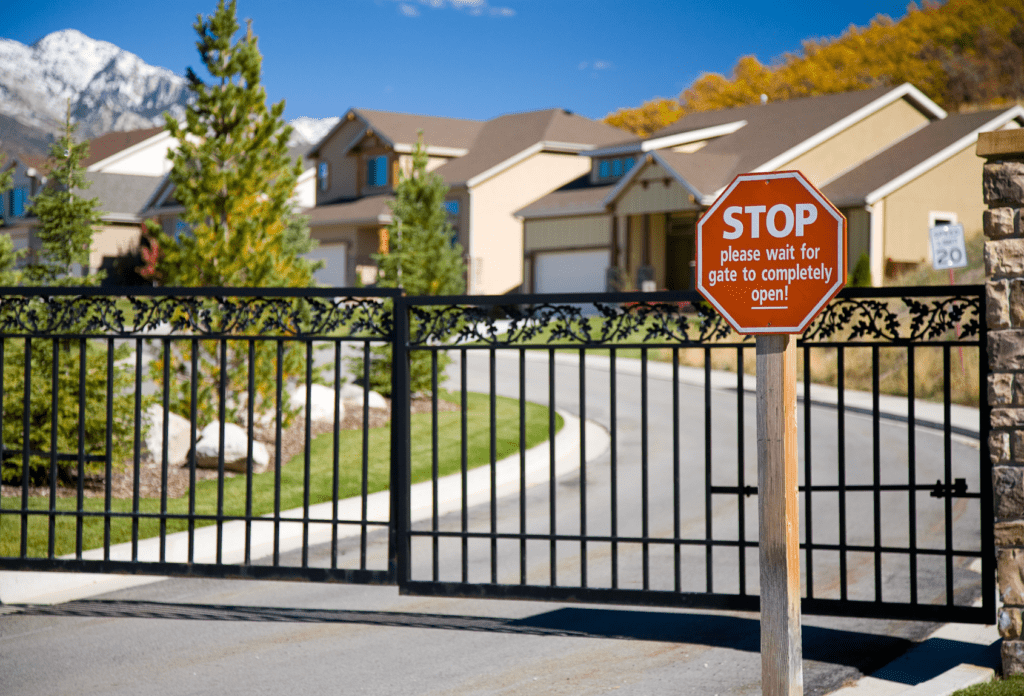Ever looked down at the sidewalk and wondered, “Who actually owns this?” Well, you’re about to become a sidewalk savvy!
We’re going on a journey, diving deep into the fascinating world of public and private property, busting some myths, and unpacking the big question – who really owns those sidewalks you walk on every day?
So, lace up your sneakers, let’s hit the streets and uncover the secrets of sidewalk ownership together!
Discussing Public Sidewalks: Ownership, Maintenance, and Usage
Alright, let’s tackle public sidewalks. They might be in front of your house, but what does that mean for you? Let’s dive in.
Who Actually Owns Public Sidewalks?
Public sidewalks are usually owned by the government, often the local city or municipality. They’re there for everyone’s use, making sure we can all walk around safely.
And who puts them there? Usually, the city or local government does when they’re building roads and other infrastructure.
So, Who Takes Care of Public Sidewalks?
Well, it’s a bit of a gray area. The government owns the sidewalk, but maintenance and liability can fall to both homeowners and local governments.
It can change based on local rules, so it’s always a good idea to check your local laws.
What Does Maintenance Mean?
Maintenance usually means keeping the sidewalk clear and safe. That could involve fixing damages, removing obstructions, and dealing with winter weather.
The government takes care of big repairs, like replacing unsafe sections of the sidewalk. But the everyday stuff? That often falls on homeowners.
In a lot of places, homeowners have to keep the sidewalk clear, which might mean shoveling snow or picking up fallen leaves. But it’s not the same everywhere, so check your local rules.
What If Someone Gets Hurt?
That’s where things can get tricky. If someone trips and falls, who’s to blame? Well, it depends.
If a homeowner is supposed to keep the sidewalk clear and doesn’t, they might be liable if someone gets hurt.
For instance, if a local rule says you have to clear snow and you don’t, and someone slips and falls, you could be held responsible.
But if there’s a structural problem with the sidewalk, the city or municipality might be the one on the hook.
What Can Homeowners Do with Public Sidewalks?
Even though it’s public property, homeowners have some rights. They can use the sidewalk just like anyone else.
But there are limits. They can’t block the sidewalk, damage it, or make changes without permission. And just because it’s next to their property, they can’t claim ownership.
Always remember, these are general rules. The exact details can vary based on where you live. If you’re ever unsure, reach out to your local city or municipality to get the info you need.
Private Sidewalks: A Whole Different Ball Game

Ever stumbled across a sidewalk that isn’t for everyone? Welcome to the world of private sidewalks. They’ve got their own rules, and we’re about to dive right in.
Who Owns These Private Sidewalks, Anyway?
Well, private sidewalks are just that – private. They’re usually within private properties and not open to the general public.
You might find them in residential areas, gated communities, or commercial spaces. And guess who owns them?
The property owner, or sometimes a homeowners association (HOA) if we’re talking about condos or planned communities.
So, Who Looks After Private Sidewalks?
This one’s easy – the owner. With private sidewalks, all maintenance and repairs fall to the property owner or the HOA. There’s no government help here, it’s all on the owner.
What About Maintenance?
Everything from daily tidying to major repairs is down to the owner. This could mean removing hazards, dealing with snow and ice, or fixing wear and tear damage.
The key is keeping the sidewalk safe and easy to use, for everyone’s sake and to avoid any potential legal problems.
And If Someone Gets Hurt?
If someone has a tumble on a private sidewalk, usually the property owner is liable. That’s because the owner has a legal duty to keep their property safe.
So if someone gets hurt because the sidewalk isn’t up to scratch, they might be able to make a claim against the owner or the HOA.
What Can Homeowners Do with Private Sidewalks?
With private sidewalks, homeowners can control who uses the sidewalk and how it’s used.
But, there are limits.
While homeowners can restrict access a bit, they can’t create a danger to others. If the sidewalk isn’t safe and well maintained, they could face legal consequences.
Remember, these are just the general rules. Specific laws and regulations can vary depending on where you are.
If you need definitive answers about your private sidewalk, check your local laws and consider consulting a legal professional if needed.
Busting Some Sidewalk Myths
When it comes to sidewalks, there’s a whole bunch of myths floating around. They can cause conflicts and a heap of confusion.
So, let’s roll up our sleeves and debunk these misconceptions together. And let’s also dig a little deeper into why they’re so common.
Myth 1: “The sidewalk in front of my house? It’s mine.”
This one’s super common. A lot of folks think if a sidewalk’s outside their house, it must be theirs.
Makes sense, right? But it’s usually not true.
Many sidewalks are public property, looked after by local governments. Just because it’s near your house doesn’t mean you own it.
Myth 2: “The city owns the sidewalk, so they must look after it.”
Sure, local governments own public sidewalks, but they don’t always take care of all the maintenance.
Homeowners often have to pitch in with tasks like clearing snow or reporting serious damage.
This varies depending on where you live, so it’s best to check with your local government.
Myth 3: “If someone falls on the sidewalk, it’s the government’s problem.”
This one’s a bit tricky. Public sidewalks belong to the government, yes. But if someone gets hurt, it’s not always their responsibility.
If a homeowner didn’t do their part in keeping the sidewalk safe, they might be on the hook. It’s a shared responsibility.
Myth 4: “I can do whatever I want with the sidewalk.”
Whether it’s a public or private sidewalk, homeowners can’t always make changes as they wish. For public sidewalks, you’ll probably need permission from local authorities.
And for private ones, there might be rules from your homeowners association or local zoning laws.
So, Why All the Confusion?
A lot of these misconceptions come from not fully understanding property rights and responsibilities. It’s easy to make assumptions based on what seems logical, but the laws often say otherwise.
Also, the line between public and private property can get blurry. With sidewalks right next to a house and homeowners sometimes handling maintenance, it’s easy to get mixed up about who owns what.
On top of that, laws can be vastly different from one place to another. So, what’s true in one city might not be true in another, adding to the confusion.
But don’t worry, the best antidote to all these myths is simple: education. Knowing your local laws and regulations will help you navigate the sidewalk maze like a pro.
Sidewalk Tales: Stories from the Real World
Let’s bring these sidewalk rules to life with some real-world examples. They’ll help us understand the ins and outs of sidewalk ownership, maintenance, and liability.
Story 1: Snow Day in Boston and Washington, D.C.
In many parts of the U.S., like Boston and Washington DC, homeowners have to shovel snow off the sidewalks next to their houses.
If they don’t do it quick enough after a snowfall, they might have to pay a fine. It’s a perfect example of shared responsibility.
The city owns the sidewalk, but it’s up to the homeowner to keep it clear and safe when it snows.
This video goes over requirements and fines for Washington, D.C. Property owners must clear snowy/icy sidewalks within the first 8 hours of daylight after the last snowflake falls.
Story 2: Trouble with Street Trees in Sacramento
Sacramento’s got about 2,300 miles of sidewalks. Under the city rules sidewalk upkeep is the responsibility of property owners.
So, if you own property here, it’s your job to keep the sidewalks safe and clean. Even if the damage was caused by city streets.
This video goes over a story of a Sacramento homeowner who must pay thousands of dollars for damage caused by a city-owned tree.
How to Find Out Who Owns the Sidewalk in Front of Your House
Wondering who owns the sidewalk in front of your house? It’s not just idle curiosity—it directly affects your rights and responsibilities as a homeowner.
Let’s explore how you can figure this out.
The Lowdown on Local Laws and Regulations
Most sidewalks in U.S. cities are considered public property. The local government or municipality usually owns and takes care of them.
But it’s not the same everywhere. Some cities have unique rules, and different properties can have different regulations.
The Hunt for Sidewalk Ownership: Where to Look
So, where do you look to find out who owns that sidewalk? Here are a few options:
Check in with the City Office
Your local city or municipal office is a great starting point. They usually have detailed records of property ownership.
Just give them your address, and they’ll help clarify who owns the sidewalk.
Browse Online Property Records
Lots of cities and counties have online resources with property information. You might be able to find out who owns your sidewalk with a few clicks on these sites.
Read Local Zoning Ordinances
Zoning ordinances lay down the land use and development rules for a city or county. These documents often have details on sidewalk ownership and responsibility.
Examine Your Property Deed or Plat
Your property deed or plat—a land division map—might have info on sidewalk ownership. But they can be tricky to interpret and might not directly mention the sidewalk.
Stuck? A local real estate attorney or agent might be able to help. They often have in-depth knowledge of local property laws and can guide you.
Remember, it’s important to know who owns your sidewalk. It’s not just about who shovels the snow or fixes a crack.
It’s also about understanding your rights and duties as a homeowner.
After all this, you may actually prefer not to have sidewalks in front of your house.
Conclusion
So, that wraps it up! The sidewalk mystery is finally solved. While your sidewalk may hug your property line, it’s usually the local government that actually owns it.
And while you’ve got some responsibilities, like keeping it clear and safe, your rights are limited, and the rules can vary widely based on where you live.
On the flip side, private sidewalks are a whole different ball game with owners being solely responsible for maintenance. Don’t forget to bust those sidewalk myths and educate yourself on local rules.
After all, it’s not just about who has to shovel the snow or repair a crack, it’s about understanding your rights and duties as a homeowner. Remember, when in doubt, check with your city office or a local real estate expert.
